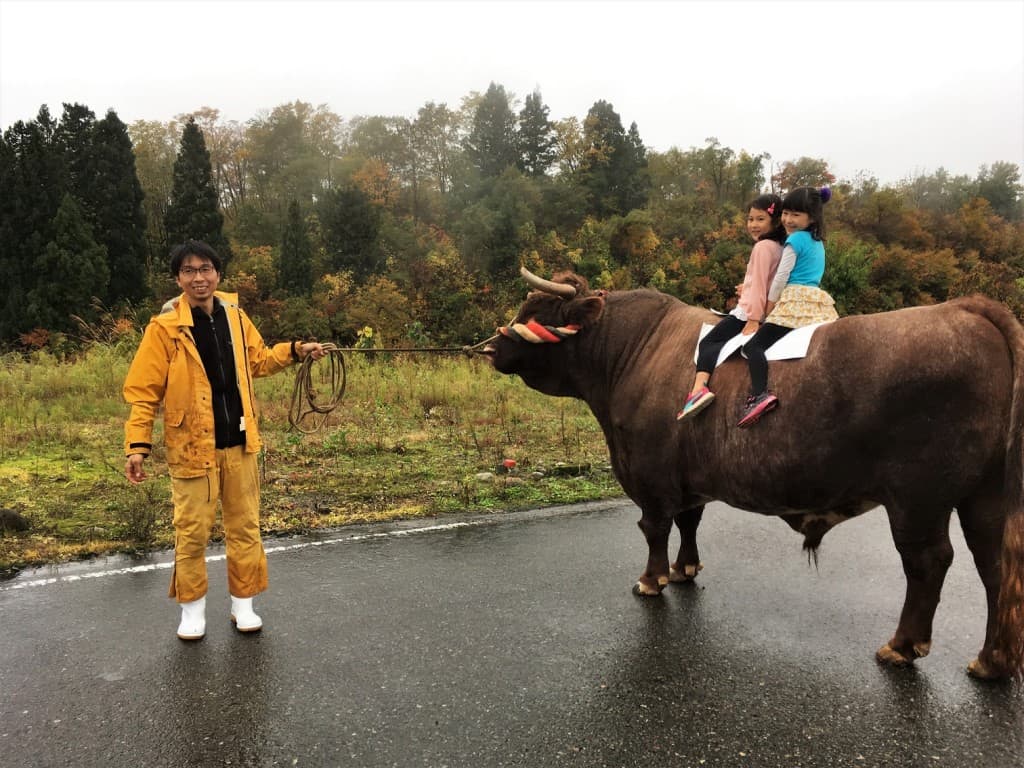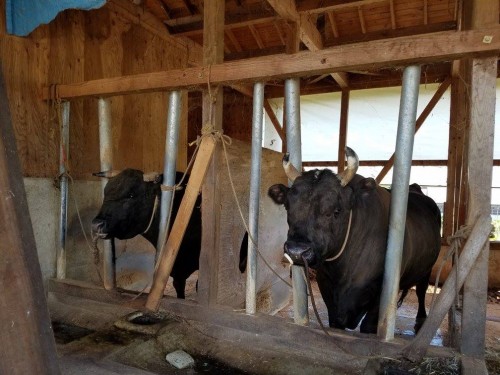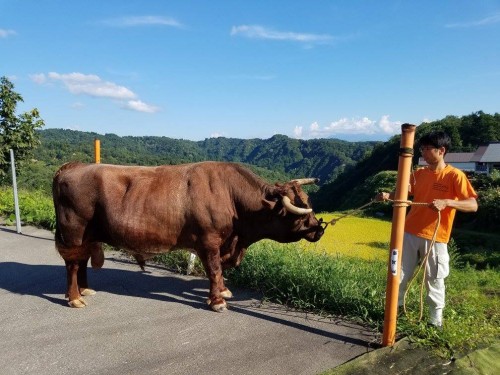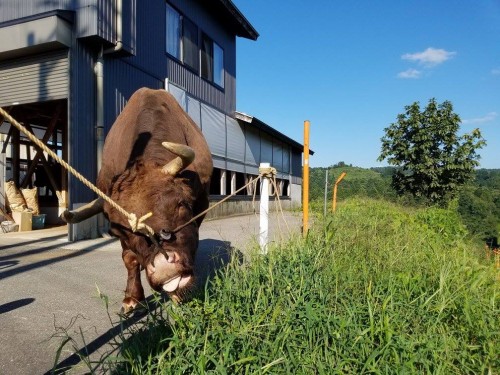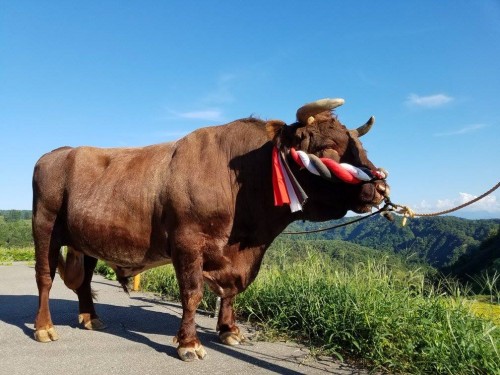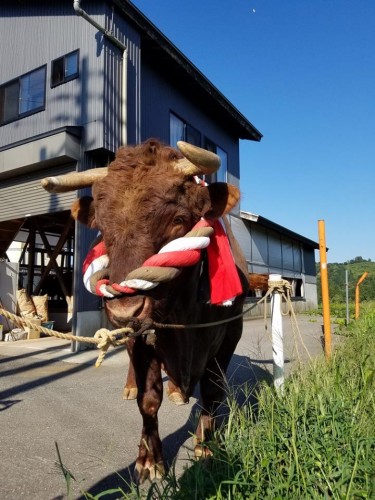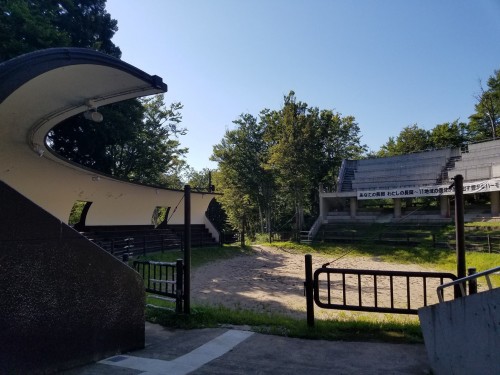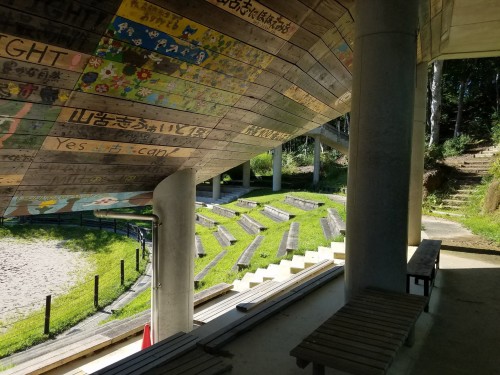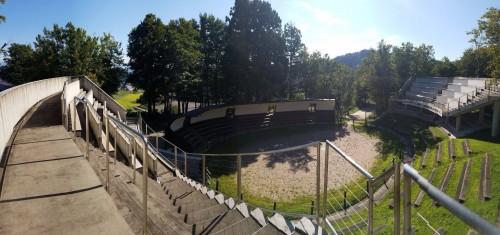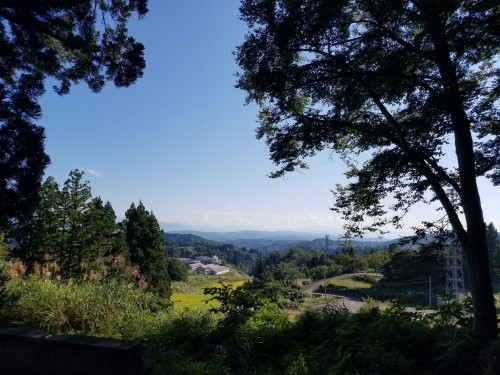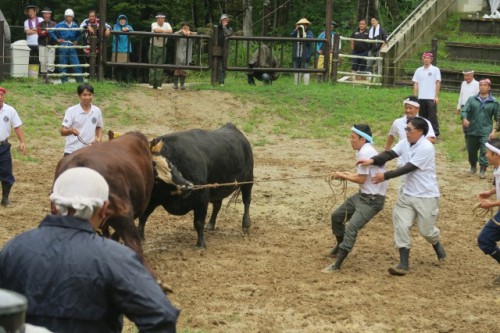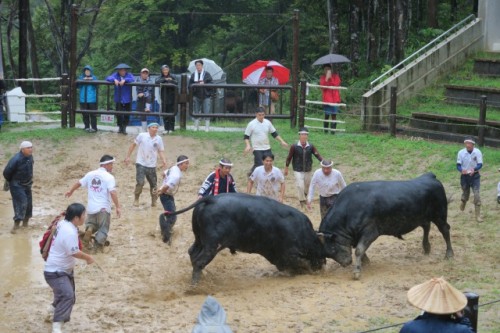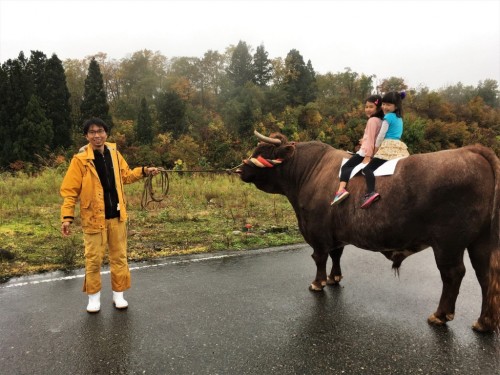Sponsored by Yamakoshi Village
When one encounters the term “bullfighting”, the imagery that comes to mind is not necessarily a pleasant; a gory spectacle of animals pitted against one another for human entertainment. With this in mind, it goes without saying that I was initially quite apprehensive before arriving at Yamakoshi – a village with a longstanding tradition of a form of bullfighting known as Tsunotsuki. However, I tried to keep an open mind, and was quickly relieved to realize that Tsunotsuki was in fact, far from such a case. Rather, it is perhaps one of the most considerately-handled animal sports that one could hope to witness.
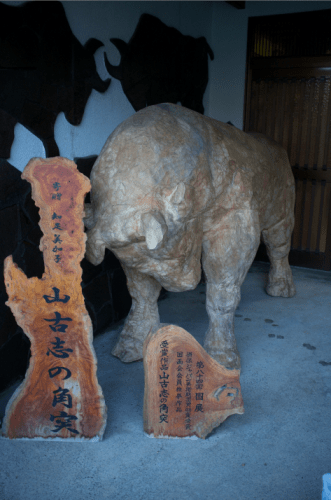
The tradition persists in its original form to this day, and although it is perhaps less spiritual in nature, today’s bull “fighters” are treated with a similar reverence. Referees known as seko closely monitor the matches, ensuring that the sparring is kept civil, scrabbling to ensure that the bulls are not harmed. These seko are typically local farmers, who raise these bulls in addition to their primary business of crops or koi cultivation. On average there are about fifteen of these referees, making the matches quite a sight to behold – perhaps more so for the human presence than that of the bulls.
In fact, even to declare Tsunotsuki a “fight” might be somewhat of a misnomer, as each match is declared a draw. Rather than a battle which necessitates a winner or loser, it is a competition of strength and endurance. The bulls lock horns And push each other around the ring, until one eventually tires. When this happens, the lead seko escorts them out of the ring, guiding the bulls away from each others using ropes tied to their noses and hind legs, then taking the bull for a lap while it is met with applause for its effort. Bulls have never been killed in this practice, and in fact, if a bull is injured, sekos will stop the match and pray – another practice rooted in Shinto belief.
The sport has been likened to sumo wrestling – a comparison that becomes all the more understandable when you meet the participants. The bulls wear adornments similar to that of sumo, and are similarly hulking and yet warm-hearted presence. They also share the same competing season, as well as many names akin to those of sumo. This doughy fellow featured in the pictures above was named Ryouma, and was about as docile as one could hope. Although I did not get to see him participate in Tsunotsuki, I was able to take him on a brief stroll down one of the paddy side roads near the fighting bulls’ barn. Upon a neighboring hill, Yamakoshi is equipped with its own small cement stadium for Tsunotsuki. The stadium itself boasts quite anatmosphere – a cement coliseum atop a hill amid a lush forest. The underside of the bleachers are linewith messages of encouragement and support for Yamakoshi and its farmers, dating back to the fallout from the Chuetsu earthquake.
As for procedurals, the Seko will begin each match with a prayer – cleansing the stadium with salt, and each assistant wrangler will receive a swig of sake from the master Seko. Tsunotsuki will typically will last about three hours, with varying stages, featuring fifteen consecutive competitions of bulls ranging from “lightweight” to “heavyweight”.
There is of course, as with any Japanese festival, an abundance of food stalls and festival fare to accompany the Tsunotsuki matches. Guests can enjoy bentos and beer between gasps of awe and excitement.
Rooted in Shinto tradition, Tsunotsuki is a showcasing of endurance and bravery, of both the bulls and the Seko. While it requires a certain strength of nerves to witness the scrabbling of the sekos, you are fortunate enough to be in Yamakoshi during the season, it is an event like not other. Fare is 2000yen for adults, and 1000 for children.
There are typically only about ten to twelve Tsunosuki events held in Yamakoshi per year, although the bulls will sometimes travel to the nearby town of Ojiya, and elsewhere in the Nagaoka area. Information for Tsunotsuki events can be found at Nagaoka city’s homepage (in Japanese).


